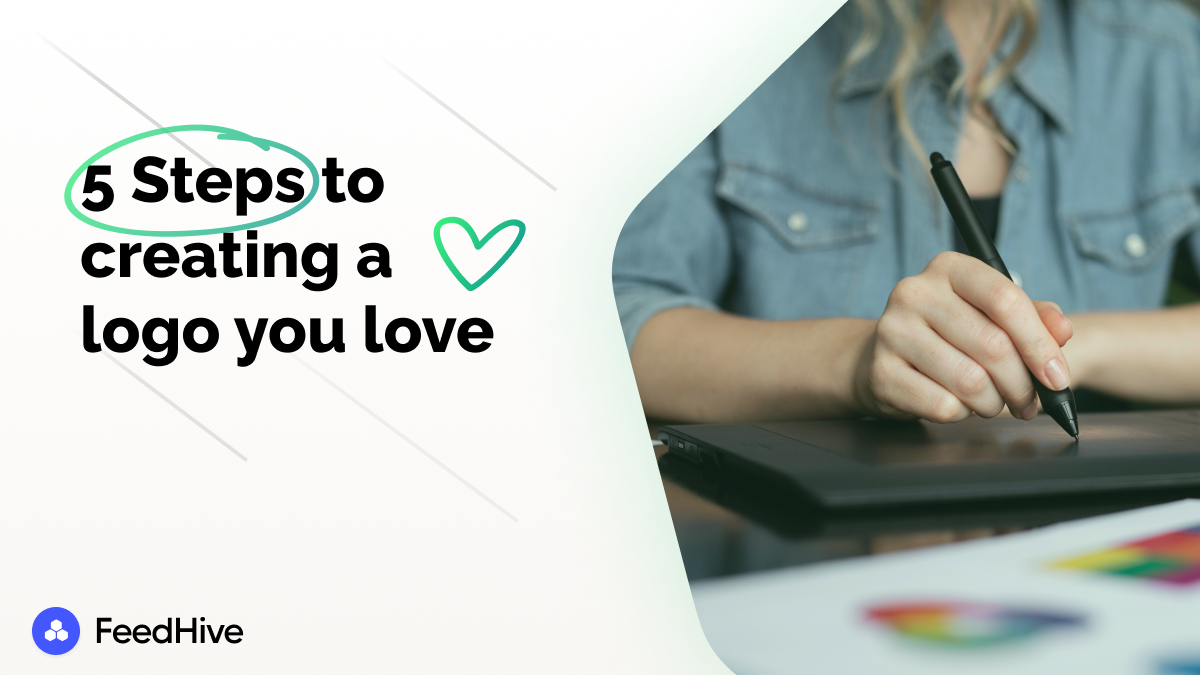
Ever wondered why every successful brand out there has a killer logo? It's because a logo dramatically impacts how people perceive and connect with a brand. It's like the face of your business, making a lasting impression on your target audience and encapsulating everything your brand stands for. So it's a must for every brand to know how to design a logo.
But here's the thing: designing a standout logo isn't as easy as it seems. It takes a whole planning process. That's precisely why we are enthusiastic about assisting you on this journey. This handy guide is here to spill the beans on how to make a logo for your business. We'll cover everything from understanding your brand's identity and the elements of a fantastic logo to making smart design choices and navigating the whole creative process. So, let's dive in and get your logo game on point!
First things first, your logo is the first impression of your brand. It's the visual representation of your website, products, marketing materials, and store signage. It might seem like a small piece of the puzzle, but trust us; it carries much weight. Your logo holds your brand values, products, target audience, industry, background, and personality all wrapped up into one neat package. It is like a magic portal that transports viewers straight into the heart and soul of a brand. Think about the iconic swoosh of Nike or the golden arches of McDonald's.
These simple yet powerful images have become ingrained in our collective consciousness. They evoke emotions, spark recognition, and stir up a sense of trust. It's a meticulously crafted work of art intricately designed to convey a brand's story in a single glance. However, creating such a masterpiece requires countless hours of brainstorming, sketching, tweaking, and refining.
When done right, a logo becomes a brand's ultimate weapon. Thats why understanding how to design a logo is crucial whether you're a business owner aiming to establish your mark or a curious creative venturing into the design world.
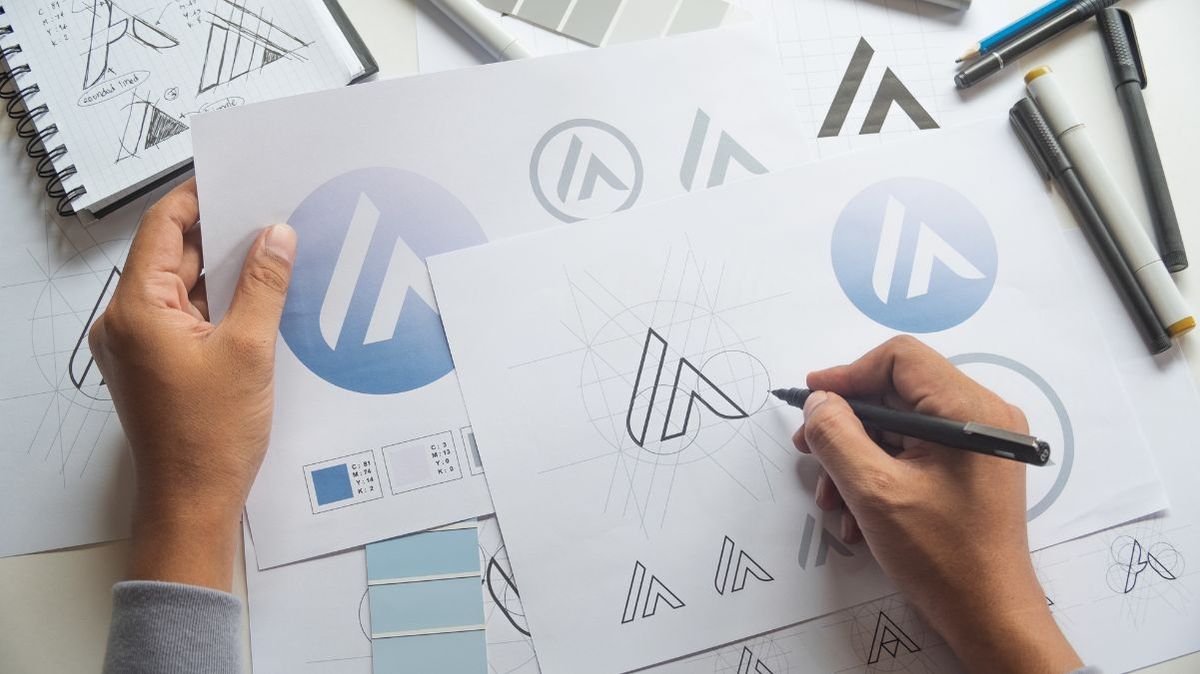
Before diving into the process of how to come up with a logo, it's crucial to understand why it is a must for every brand. Well, in today's competitive corporate world, standing out and gaining recognition is paramount for the success of any business. A professionally designed logo plays a significant role in achieving that goal.
In fact, according to Finance Online, a staggering 75% of people can recognize a brand simply by its logo. This statistic highlights the importance of creating a visually appealing and memorable logo that can leave a lasting impression on potential customers. So, buckle up and get ready to explore the amazing reasons why every brand needs to rock a stellar logo!
A strong brand identity is crucial for establishing a reputable brand image and increasing the desirability of your business. Effective logos often feature a simple design with a single color and an accompanying image. Your logo's chosen color and style should be consistently incorporated across all marketing materials, including emails, landing pages, packaging, business cards, and more. According to Reboot, incorporating a single signature color in your logo can significantly boost brand recognition by up to 80%.
This means that when people see your logo, they will associate it with your business, the positive customer experiences, and the high-quality products or services you provide. This heightened recognition translates into increased sales as more individuals develop a strong connection between your logo and the brand. For example, think about the recognizable red and white Coca-Cola logo. The vibrant red color is instantly associated with the brand and
evokes feelings of happiness and enjoyment. This consistent use of color has contributed to Coca-Cola's immense brand recognition and global success.
A professionally designed logo is like a polished business suit that elevates your brand's image and exudes a sense of credibility. Like a meticulously tailored suit, a thoughtfully designed logo with balanced elements, clean lines, and appropriate typography creates a positive first impression. It shows that your brand takes its identity seriously and pays attention to the finer details, instilling confidence in potential customers.
It's suggested to imagine your logo as the front door to your business. A professionally designed logo acts as an inviting entrance that reflects the values and ethos of your brand. It gives off an air of competence, encouraging customers to step inside and explore what your brand offers.
In the context of advertising, a logo acts as a visual hook that attracts attention and reinforces brand recall. Placing a logo prominently in advertisements helps to create a strong association between the content of the ad and the brand itself. Whether in print ads, billboards, television commercials, or digital banners, a logo becomes a focal point that draws viewers' attention and serves as a reminder of the brand behind the message.
As consumers encounter these advertisements repeatedly, the logo's presence becomes ingrained in their memory, enhancing brand recognition and recall. It can facilitate brand loyalty and repeat purchases. Once customers have had positive experiences with a brand and established a connection with its logo, they are likely to become loyal customers.
A versatile logo design can adapt to different contexts, color schemes, backgrounds, and orientations, allowing it to be used effectively in various marketing materials and platforms. It should adapt to digital and print formats, ensuring consistent brand representation across channels and touchpoints.
For instance, The Google logo exemplifies versatility in design. While the primary logo consists of the company name in a vibrant multi-coloured scheme, Google has also created various iterations to suit different purposes and platforms. But, the simplified "G" icon is used as a compact and recognizable brand representation, particularly in mobile app icons and social media profiles.
This versatility enables Google to maintain a consistent brand identity while catering to different display limitations and contexts. Now that you understand why a logo is the essence of every brand and business, if you're eager to learn how to build a logo, let's delve into the details.
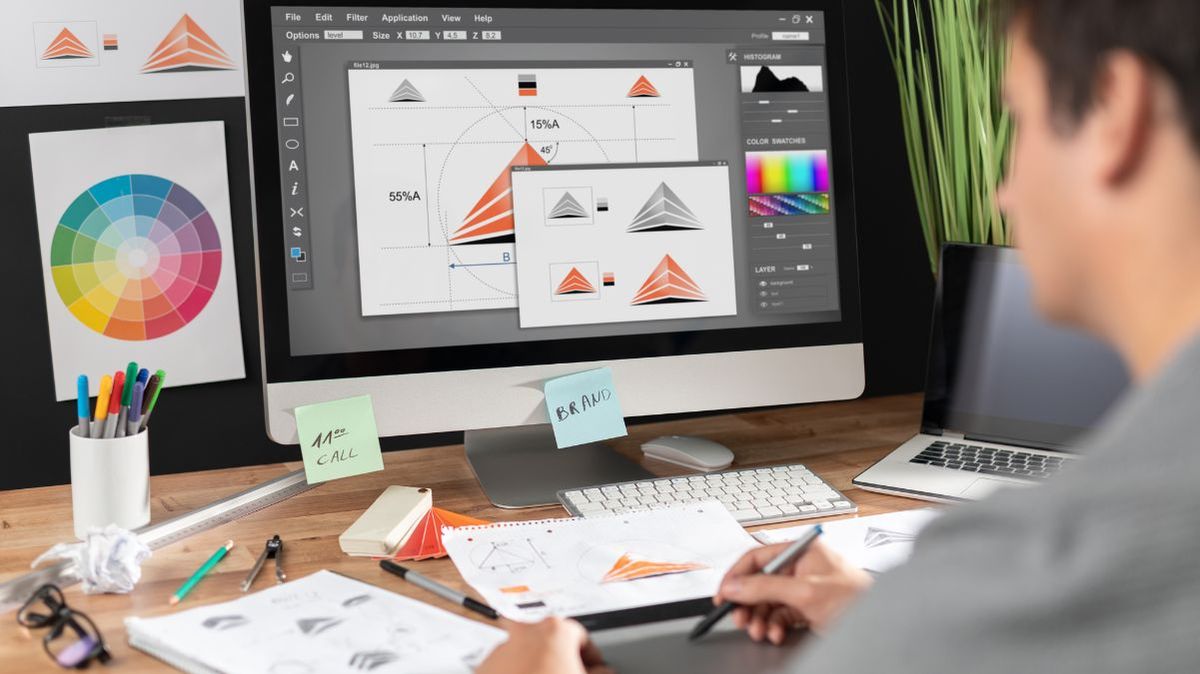
Designing a logo is a creative and intricate process that requires careful thought and attention to detail. Every curve, color, and font choice is meticulously crafted, representing countless hours of dedication. However, there is an important aspect to consider: while a logo carries immense significance, it's equally crucial to streamline your business for triumph.
After all, a marvelous logo means nothing if your business lacks structure. This is where powerful AI tools like FeedHive come into play, offering comprehensive solutions to elevate your business to new heights.
From hashtag research to seamless integration with different social sites, FeedHive offers the immense features you need to streamline your business and achieve exceptional outcomes. So, remember, it's not just about having a visually appealing logo; it's about coupling it with a robust and streamlined business strategy. FeedHive can handle the business, but to know how to design your own logo, you have to read on:
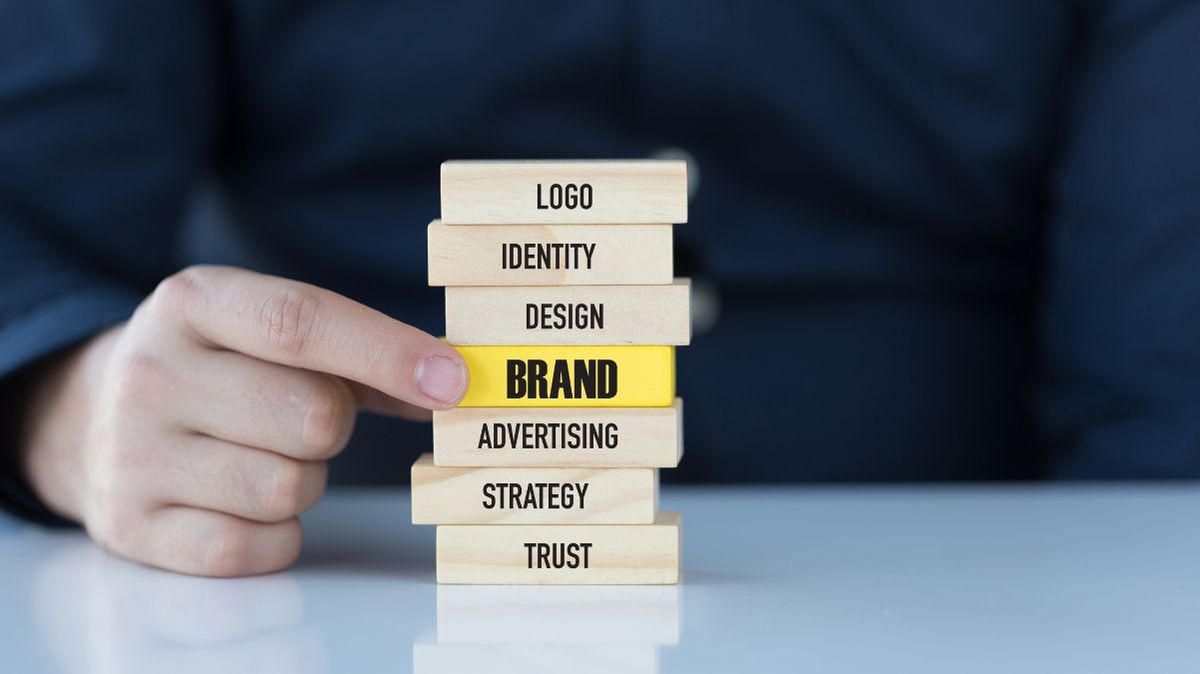
Crafting a logo is akin to distilling the very soul of your brand. It's like painting a vivid portrait that speaks volumes about your brand's character, aspirations, and the captivating narrative woven into its fabric. To get to the bottom of your brand identity, ask yourself the following questions:
While creating a logo, imagine it as a movie title encapsulating your brand's story. Just like a title sets the stage for a film, a logo sets the tone for your brand's identity. So, close your eyes and imagine the vivid colors, shapes, and typeface that would best narrate your brand's tale. You can bring your logo to life by envisioning this aesthetic and mood. Now that you have explored the importance of defining your brand's essence and story, we can move forward to the next steps in the logo design process.
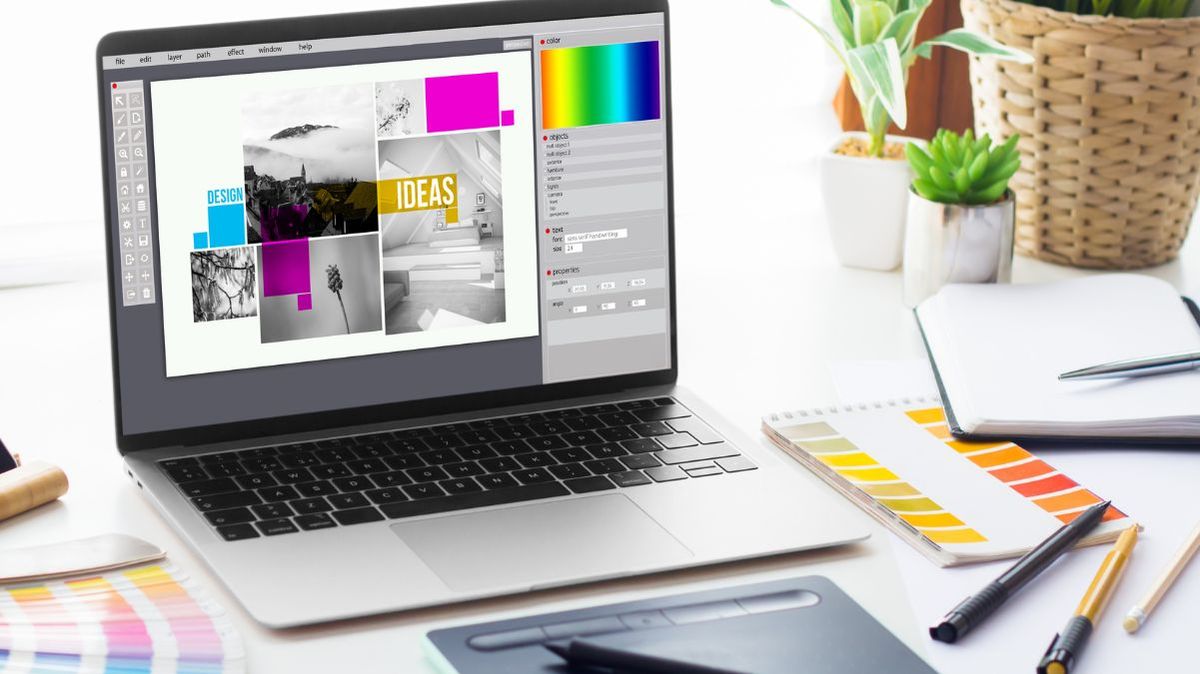
It would be best to thoroughly research your industry and competitors, examining their logo designs, colour schemes, and typography choices. This analysis helps you understand the visual landscape and identify opportunities for differentiation. By researching your audience's preferences, interests, and values, you can better understand their aesthetic expectations and tailor your logo accordingly.
In parallel, exploring design trends is crucial to ensure your logo feels current and relevant. By staying up-to-date with the latest trends in color usage, typography styles, and visual elements, you can infuse contemporary elements into your design while maintaining a timeless appeal. However, it's important to balance trendiness with originality, using trends as inspiration rather than imitation.
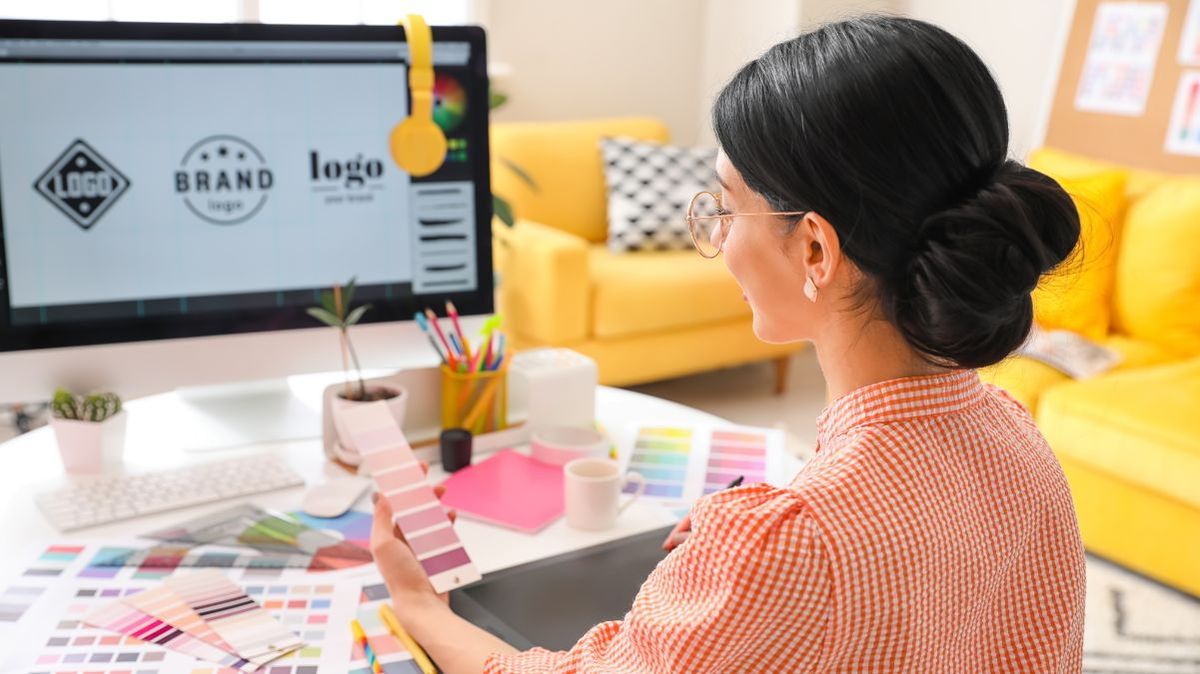
Here's a closer look at these important steps:
Throughout the sketching and conceptualization stages, it's important to consider the scalability and versatility of your logo. Ensure that it can be effectively reproduced across different sizes and mediums, maintaining its visual impact and legibility.
Once you select the most promising sketch from your initial concepts, it's time to refine and polish it. Refining your chosen sketch involves paying attention to details, honing the composition, and ensuring visual coherence. Start by examining your design's proportions, shapes, and lines, making any necessary adjustments to create a balanced and harmonious composition. Refine the curves, angles, and spacing to achieve a visually pleasing and professional look.
Next, focus on typography. Select appropriate fonts that align with your brand's personality and complement the overall design. Consider legibility, readability, and the visual relationship between the typography and other elements of the logo. Experiment with different font weights, styles, and arrangements to find the perfect combination that enhances the overall impact of your design. During the refinement process, don't forget to consider color choices. You can learn about it in more detail in the next step.
Understanding color psychology is essential in logo design, as colors significantly impact human emotions, perceptions, and behaviors. By harnessing the power of color, you can evoke specific feelings and create a strong connection between your brand and your target audience. Colors can evoke emotions and moods. Different colors are associated with distinct emotional responses. To provide some examples, consider the following associations:
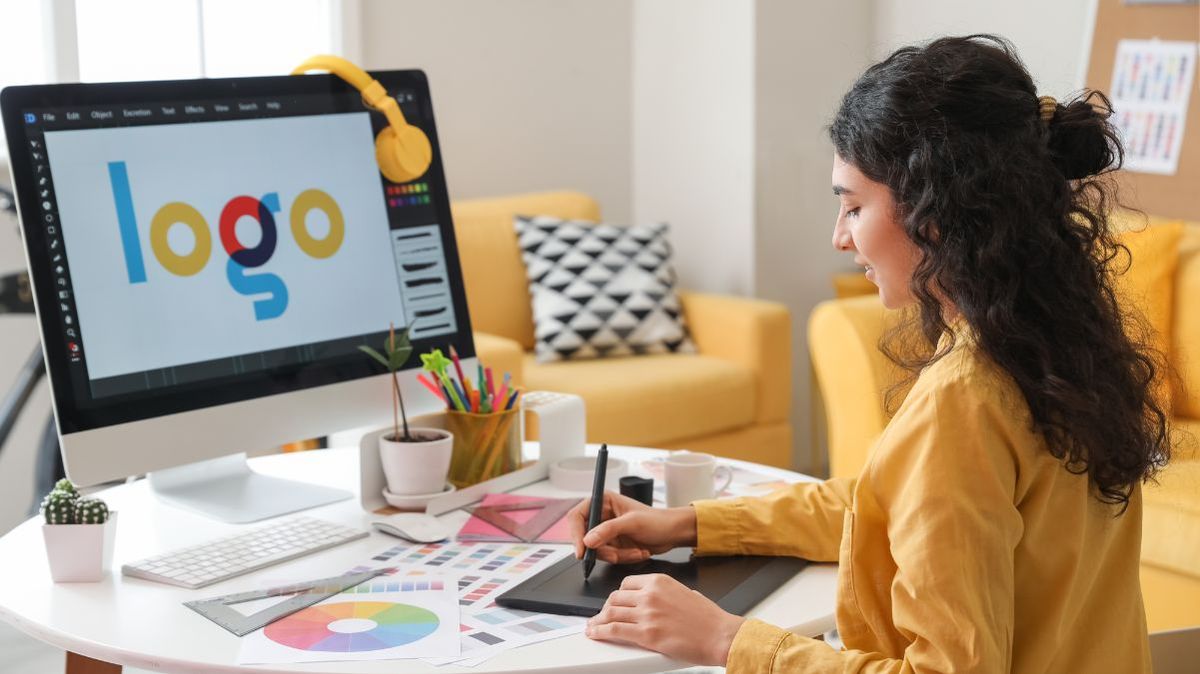
To turn your logo concept into a digital creation, you'll need design tools that offer a variety of features and functions. These tools help you bring your logo to life with a polished and visually appealing finish. Look for software options like Adobe Illustrator, Adobe Photoshop, CorelDRAW, Sketch, or Canva that match your skill level and requirements.
Consider the software's capabilities, user-friendly interface, and availability of tutorials or resources to support your design journey. Choose the right design tool, and you'll be well-equipped to transform your logo concept into a professional digital creation.
Start by recreating the core elements of your logo using basic shapes like circles, squares, or triangles. Use the drawing tools provided by the design software to create and manipulate these shapes to match your original sketches or concepts. Refine the typography by selecting appropriate fonts and arranging them in a visually pleasing way. Experiment with different font styles, sizes, and spacing to find the perfect combination that aligns with your brand identity.
Once you have refined your logo design to your satisfaction, it's time to finalize and implement it. Take a final look at the details, ensuring everything is aligned and visually appealing. Fine-tune the proportions, typography, and colors to achieve a polished finish.
After finalizing the design:
By thoughtfully finalizing and implementing your logo, you can confidently showcase your brand to the world and establish a consistent and professional visual identity.
Well, it's true that a logo alone is not enough. Your brand and business should reflect success at every point. And how can you achieve that? With FeedHive, of course! If you find yourself stuck when analyzing your brand's performance, FeedHive is here to help. It provides valuable insights into what drives growth and what drives reach and even suggests the best times to post.
Plus, if you're struggling with hashtag research for your business, FeedHive has you covered. Utilize its hashtag manager to find, research, and plan the perfect hashtag groups for your social profiles and content. Don't let any aspect of your brand go unnoticed – let FeedHive empower your business's success.
A logo serves as the beating heart of any brand. After delving into the intricacies of logo design through this blog, you should now understand how to design a logo and its significance in the business world. However, it's important to recognize that a remarkable logo alone cannot guarantee success if your business lacks a solid foundation.
You must cultivate a powerful brand identity to create a truly impactful image. This is where FeedHive comes into play, as it has the ability to revolutionize your marketing strategies, sales techniques, communication approaches, and collaborative efforts. By harnessing the transformative capabilities of FeedHive, you can elevate your brand to unprecedented heights and unlock its full potential. Embrace this powerful tool today and watch your brand thrive in the dynamic marketplace.